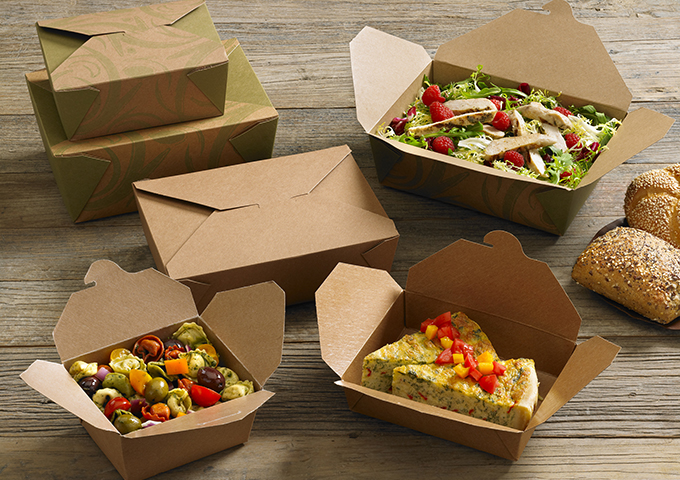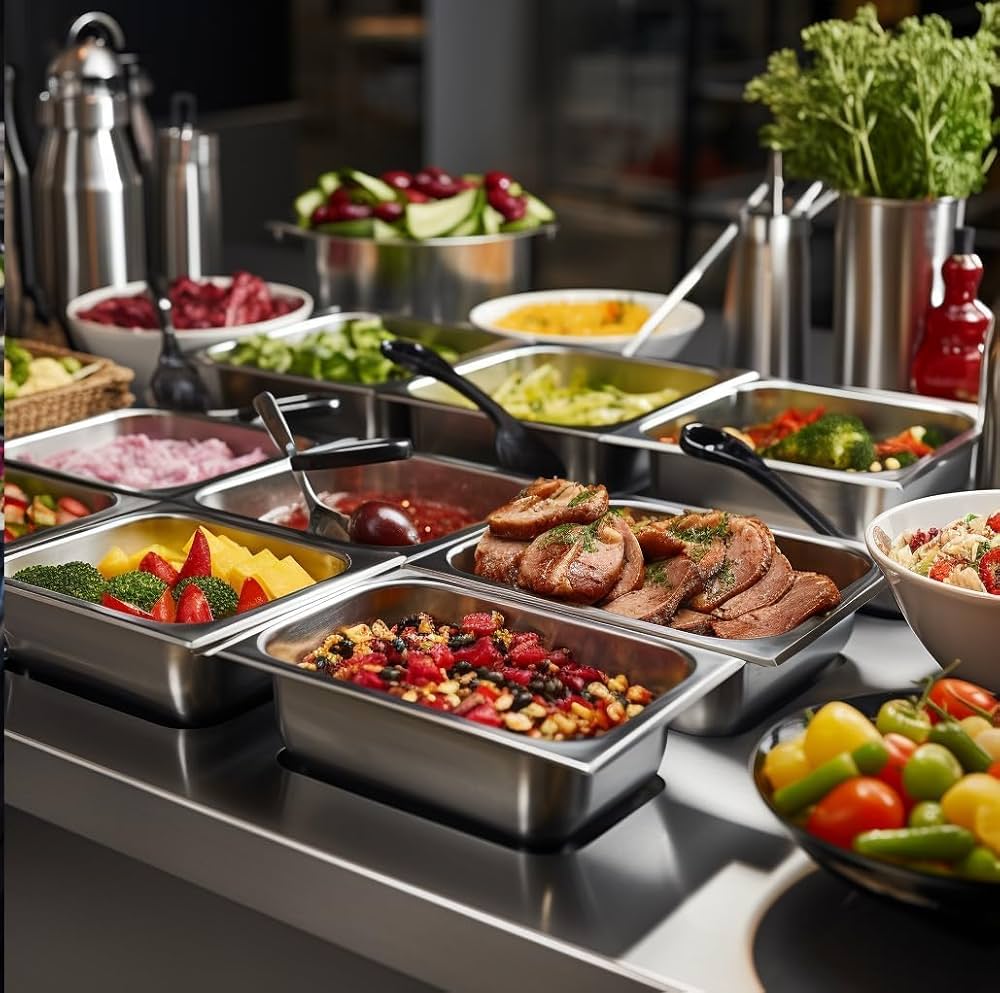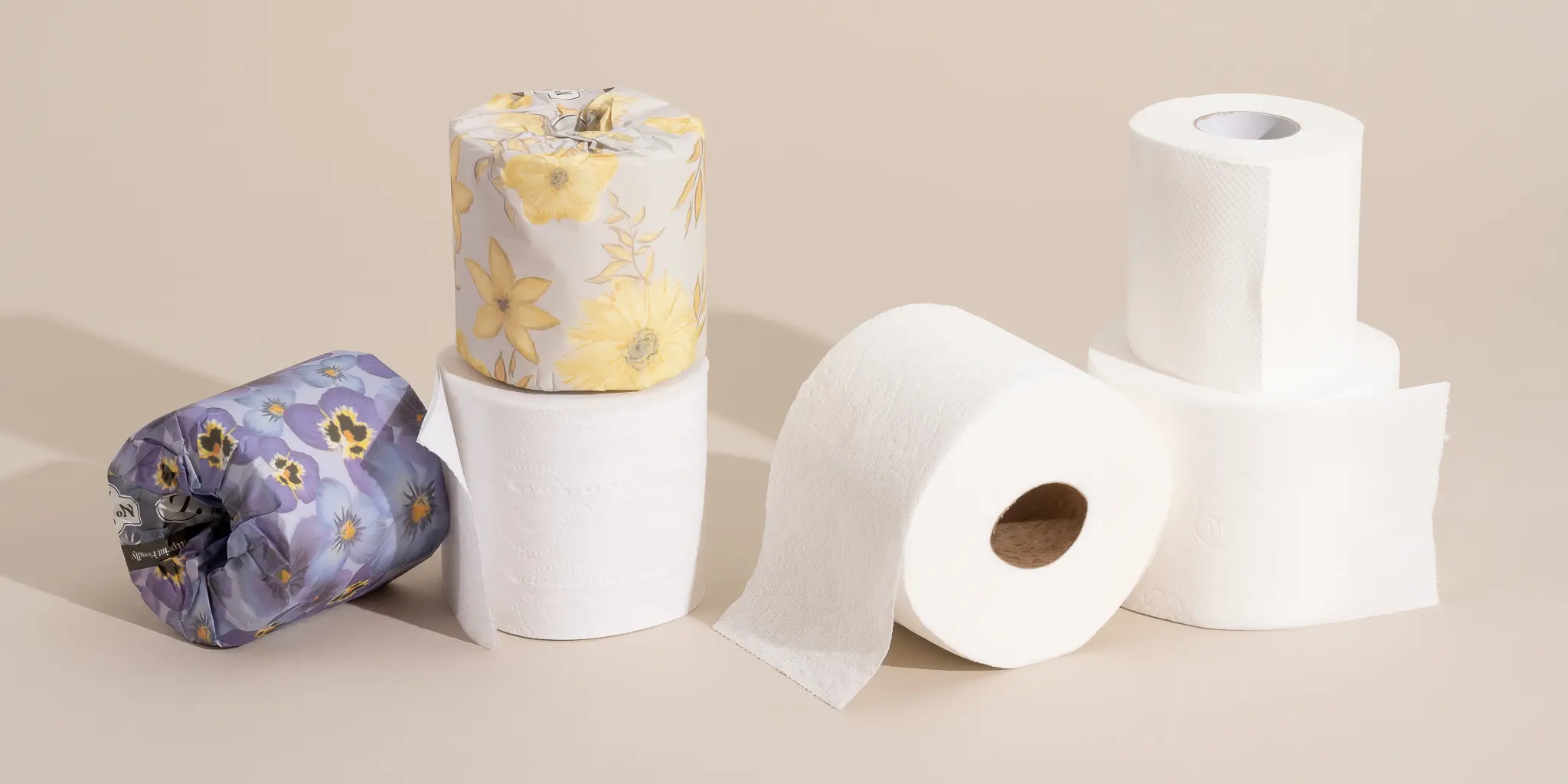
Takeaway Boxes 101: How To Select The Best Ones For Your Needs
Choosing the right takeaway boxes is essential for maintaining food quality, delighting customers, and supporting sustainability goals. This guide will...

Get 20€ off on your first order!
Finding the right GN container for cold storage, heating, or serving is key to maintaining efficiency and quality in your kitchen. This guide provides clear insights to help you choose the ideal container for your specific needs—whether preserving freshness, handling high heat, or presenting dishes beautifully.
With practical tips and expert advice, you’ll have everything you need to make the right decision. Plus: We’ll show you how to enhance your setup with accessories and tools that take your food service to the next level.
To start with a broader overview, check out our GN Containers Buying Guide: Tips For Making The Right Choice.
Different GN-container designs suit specific uses. Below, we’ll break down their features to help you identify the right one for your requirements.
Cold storage GN containers are engineered to ensure food remains fresh and at safe temperatures. These containers are typically made from polycarbonate or stainless steel, offering excellent durability and low-temperature resistance.
For more about GN container materials, explore our guide on How To Choose The Right GN Container Material: Stainless Steel, Plastic, or Polycarbonate.
When selecting GN containers for heating applications, focus on materials and designs that withstand high temperatures while maintaining structural integrity.
Serving GN containers prioritize aesthetics and accessibility while maintaining the right temperature for food presentation.
Explore other serving tools like Disposable Cutlery and Take Away Bowls to complement your GN-container setup.
| Use Case | Recommended Material | Key Features | Suitable Equipment |
| Cold Storage | Polycarbonate, Stainless Steel | Airtight lids, low-temp resistance. The choice between polycarbonate and stainless steel often depends on specific temperature requirements or the type of food being stored. Polycarbonate is ideal for low to moderate cooling, while stainless steel is better for extremely low or fluctuating temperatures. | Refrigerators, Freezers |
| Heating | Stainless Steel | High-temp resistance, even heating | Ovens, Steamers |
| Serving | Stainless Steel, Ceramic | Thermal retention, aesthetic appeal | Buffets, Catering setups |

Standardized GN container sizes (e.g., GN 1/1, GN 1/2, GN 1/3) ensure seamless compatibility across storage racks, warming trays, and other kitchen equipment. This flexibility minimizes confusion and improves operational efficiency, making it easier to organize and scale kitchen operations.
To dive deeper into standard sizing, refer to Choosing The Best Food Storage Containers For Your Needs.
We hope this guide has provided you with the clarity and confidence to select the right GN containers for your needs, whether for cold storage, heating, or serving. From understanding material compatibility to exploring standardized sizing, our goal is to help you optimize your kitchen operations with ease and efficiency.
For more insights, visit our GN Containers Buying Guide or explore our GN-Container Product Page to find the perfect fit for your needs.
Have questions or need personalized advice on selecting the perfect GN container? Feel free to reach out—our team is always here to support you in making the best choice for your kitchen’s success.
– The Droppe Team
Yes, most GN containers, especially stainless steel and polycarbonate ones, are dishwasher-safe. Always check the manufacturer’s guidelines.
Polycarbonate GN containers can typically be used in microwaves, but stainless steel and ceramic are not microwave-safe.
The GN 1/1 size is the most common, offering a standard base size that fits most equipment and setups.
Some GN containers include lids, while others require purchasing them separately. Look for airtight lids for cold storage and vented lids for heating.
Using a food-safe non-stick spray or liners can help minimize sticking, especially in stainless steel containers.
Thank you! You've signed up for our newsletter.



















Choosing the right takeaway boxes is essential for maintaining food quality, delighting customers, and supporting sustainability goals. This guide will...

Are you unsure which cleaner is best for your hard surface floors? In this article, we’ll help you choose the...

Choosing the right toilet paper can be tricky with so many options available. Whether you’re shopping for your home, office,...

Choosing the right takeaway boxes is essential for maintaining food quality, delighting customers, and supporting sustainability goals. This guide will...

Are you unsure which cleaner is best for your hard surface floors? In this article, we’ll help you choose the...

Choosing the right toilet paper can be tricky with so many options available. Whether you’re shopping for your home, office,...
Get 20€ off on your first order!
Save 30% by buying directly from brands, and get an extra 10€ off orders over €100
Save 30% by buying directly form brands, and get an extra 10€ off orders over €100